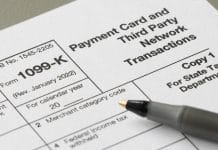If you’re repaying student loans, you’ve probably heard the term “discretionary income” thrown around, especially if you’re considering an income-driven repayment (IDR) plan. But what exactly is discretionary income, and how does it affect your student loan payments? If you’re feeling overwhelmed or unsure about how this works, don’t worry—we’ve got you covered. This guide will break it down in simple terms so you can make informed decisions about your student loans.
What Is Discretionary Income?
Discretionary income is the amount of money you have left after paying for essential expenses like taxes, housing, food, and transportation. Regarding federal student loans, the U.S. Department of Education uses your discretionary income to calculate your monthly payments under income-driven repayment (IDR) plans.
Here’s the formula they use:
Discretionary Income = Annual Income – (Percentage of Federal Poverty Guideline)
The federal poverty guideline is adjusted based on family size and state of residence. This ensures that student loan payments are affordable based on your financial situation.
How Does Discretionary Income Affect Student Loan Payments?
Your discretionary income directly impacts how much you’ll pay each month under an IDR plan. Here’s how it works:
Higher Discretionary Income = Higher Payments
If you earn more and have a smaller family, your discretionary income will be higher, and so will your monthly payments.
Lower Discretionary Income = Lower Payments
If you earn less or have a more prominent family, your discretionary income will be lower, and your payments will be more affordable. In some cases, your payment could even be $0.
IDR Plans Use Different Percentages
Each IDR plan calculates discretionary income differently. For example:
SAVE Plan: Uses 225% of the poverty guideline.
IBR Plan: Uses 150% of the poverty guideline.
PAYE Plan: Uses 150% of the poverty guideline.
ICR Plan: Uses 100% of the poverty guideline.
Your monthly payment is then a percentage of your discretionary income (e.g., 5%, 10%, 15%, or 20%, depending on the plan).
Why Does Discretionary Income Matter?
Discretionary income is key in determining how much you can pay toward your student loans. Here’s why it’s so important:
Affordable Payments
IDR plans are designed to make your payments manageable based on income and family size.
Loan Forgiveness
Any remaining loan balance may be forgiven if you stay on an IDR plan for 20-25 years.
Flexibility
If your income changes (e.g., you lose your job or have a baby), you can recertify your income to adjust your payments.
How to Calculate Your Discretionary Income
Calculating your discretionary income can feel complicated, but here’s a simplified breakdown:
Find Your Annual Income
This is your adjusted gross income (AGI), which you can find on your tax return.
Determine the Poverty Guideline
The federal poverty guideline varies by family size and state. For example, in 2024, the poverty guideline for a family of one in most states is $14,580.
Apply the Percentage
Multiply the poverty guideline by the percentage used in your IDR plan (e.g., 150% for IBR or 225% for SAVE).
Subtract to Find Discretionary Income
Subtract the result from your annual income.
Calculate Your Payment
Your monthly payment will be a percentage of your discretionary income (e.g., 10% for the SAVE Plan).
Tips to Lower Your Student Loan Payments
If you’re looking to reduce your monthly payments, here are some strategies to consider:
Choose the Right IDR Plan
Compare plans like SAVE, IBR, PAYE, and ICR to find the one with the lowest payment.
Lower Your AGI
Contribute to tax-advantaged accounts like a 401(k) or HSA to reduce taxable income.
Recertify Your Income Annually
If your income drops, recertify to lower your payments.
Increase Your Family Size
If you have dependents, your payments may decrease.
What If My Income Changes?
Life happens, and your income may go up or down. The good news is that IDR plans are flexible. You can recertify your income each year to adjust your payments. If you lose your job or face financial hardship, your costs could drop to $0.
The Bottom Line
Understanding discretionary income is crucial for managing your student loan payments. Knowing how it’s calculated and affects your costs, you can choose the best repayment plan for your financial situation. Whether aiming for lower monthly payments or working toward loan forgiveness, IDR plans can provide the flexibility you need.
If you’re unsure which plan is right for you, use the Federal Student Aid Repayment Estimator or consult a financial advisor. Taking control of your student loans starts with understanding your options—and now, you’re one step closer to financial freedom.

























